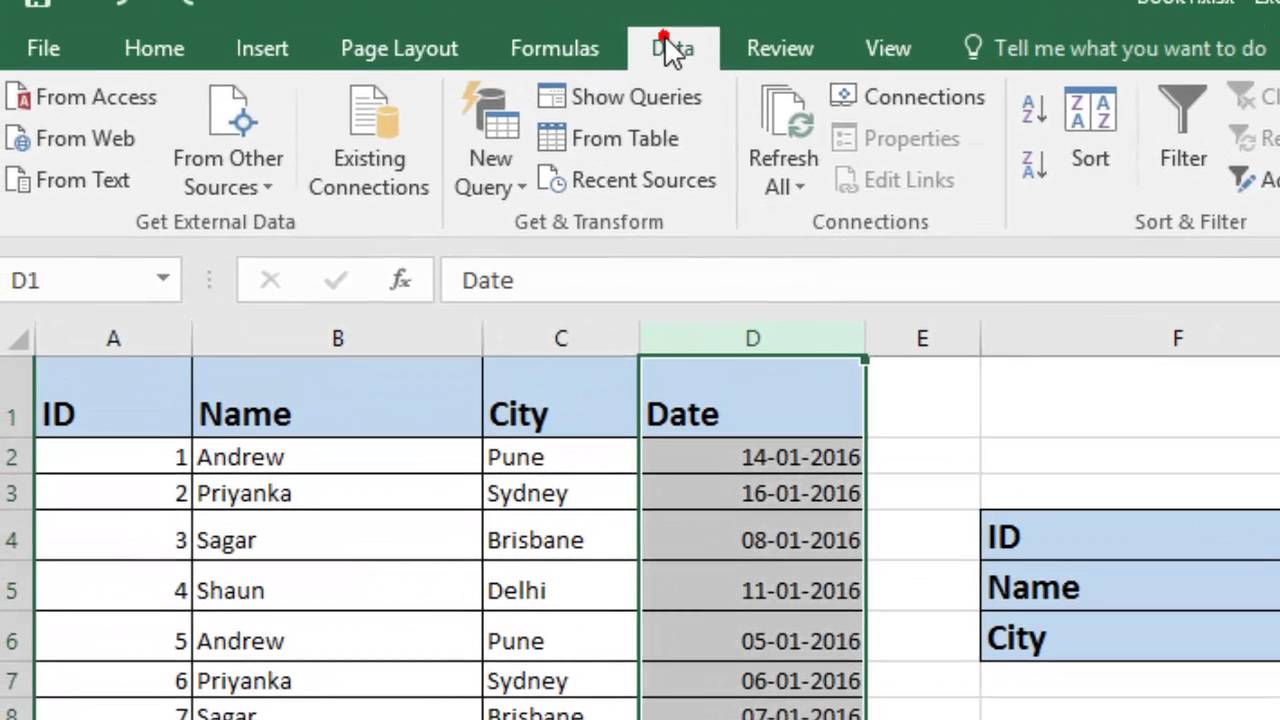

Some Excel versions have a feature that allows you to sort multiple columns by date as well. You can also use Excel’s Sort & Filter tool to further manipulate how your dates are displayed, and get more information at a glance.
Sort date by date in excel for mac windows#
On Excel for Windows and Excel for Mac, you can use the native sort by date function to get the dates in a column sorted properly. Let’s discuss this process in detail below!Įxcel dates are easy to sort manually, but Excel’s automatic date sorting often fails.


Sort date by date in excel for mac how to#
If you're trying to sort by date in Microsoft Excel, and wondering how to do it, you’re in the right palace. It will walk you through how to do it quickly and easily. : ? ^ _ ` ~ + a b c d e f g h i j k l m n o p q r s t u v w x y z A B C D E F G H I J K L M N O P Q R S T U V W X Y Z FALSE TRUE (sheet errors) (blank cells).If you are looking to sort by date in Microsoft Excel, this blog post is for you. It can also occur if the range of cells or table column has had data added, changed, or deleted.Įxcel sorts data by using the following ascending sort order: 0 1 2 3 4 5 6 7 8 9 (space) ! " # $ % & ( ) *. This can occur if values that are returned by a formula have changed and the sheet is recalculated. When you reapply a sorting criteria, you may see different results. Save your data in a table when you are sorting multiple columns or if you create complex sorting criteria that takes a long time to create. If you want to save sort criteria so that you can reapply it the next time that you open the workbook, you can save the data as a Excel table. When you sort on a range of cells, the sort criteria aren't saved with your workbook. For more information about filtering, see Filter a list of data. In contrast, when you filter, you hide extraneous data. When you sort, you rearrange data into some order. Most frequently, you will sort by column, but you can also sort by rows. Or you can sort by format, including cell color, font color, or icon set. You can also sort by a custom list that you create (such as Large, Medium, and Small). You can sort text (A to Z or Z to A), numbers (smallest to largest or largest to smallest), and dates and times (oldest to newest and newest to oldest) in one or more columns. Then fill in the Column, Sort On, Order, and Color/Icon columns for the new row.ĭata analysis begins with sorting. Under Order, choose whether the selected color or icon should be at the top or bottom of the list.įor each additional column you want to sort by, click Add Level. Under Color/Icon, select the color or icon. Under Sort On in the same row, click Values, and then on the shortcut menu, click Cell Color, Font Color, or Cell Icon. Under Column, click the blank space next to Then by, and then on the shortcut menu, click the column that you want to sort by. But if the data does not have a header row, clear the My list has headers check box. If the data has a header row, select the My list has headers check box. Because there is no default sort order for cell color, font color, or icons, you must define your own order for each sort operation.Ĭlick a cell in one of the columns that you want to sort. You can also sort by an icon set that was created by using a conditional format. If there are cells formatted by cell color or font color in the column that you are sorting, you can sort by these colors.


 0 kommentar(er)
0 kommentar(er)
